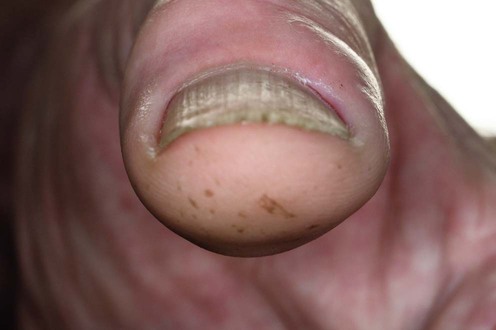| Acute |
 Amoxicillin with clavulinic acid Amoxicillin with clavulinic acid |
E |
 Surgical drainage Surgical drainage |
E |
| Chronic |
 Topical corticosteroid preparations Topical corticosteroid preparations |
B |
 Topical tacrolimus 0.1% ointment Topical tacrolimus 0.1% ointment |
B |
 Topical clotrimazole drops Topical clotrimazole drops |
E |
 Topical clindamycin solution Topical clindamycin solution |
E |
| Due to retronychia |
 Avulsion of nail plate Avulsion of nail plate |
E |
| Drug-induced periungual granuloma |
 Mupirocin and clobetasol propionate Mupirocin and clobetasol propionate |
E |
| EGF- or mTOR inhibitor-induced paronychia |
 Doxycycline Doxycycline |
E |
 Dose reduction Dose reduction |
E |


